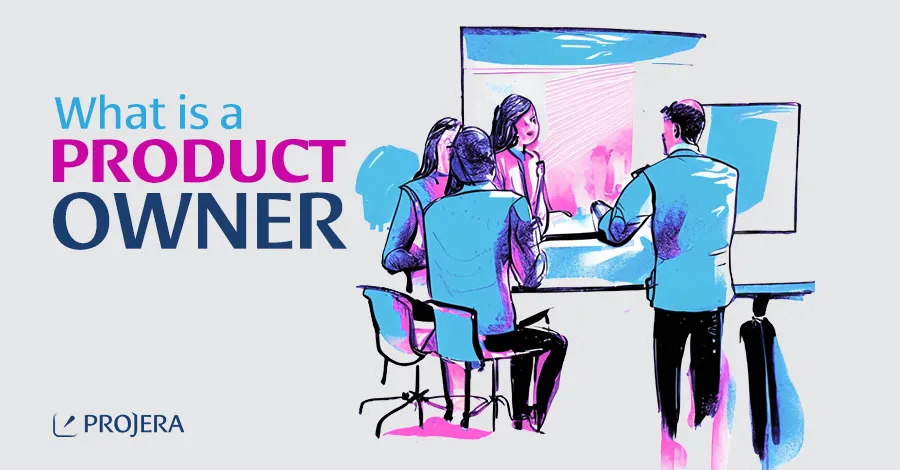
What is a Product Owner?
The Product Owner is responsible for maximizing the value of the product that results from the work of a Scrum team, as described in the Scrum Guide. The way to achieve this can vary greatly between organizations, scrum teams and individuals.
Product Owner is also responsible for the following topics related to product backlog management:
- Develop product target and manage its communication
- Create and manage communication of product backlog items
- To make the list transparent, visible and understandable and to give instructions for the items on the product backlog list.
The Product Owner may perform the above tasks or delegate responsibility to others. Regardless, the Product Owner remains responsible.
For Product Onwers to be successful, the decisions they make need to be respectfully implemented by the organization they are in. These decisions can be seen in the form of work pieces that are reviewed in product backlog sequencing and Sprint audits.
The Product Owner is a person and represents the needs of many stakeholders with the product backlog. Anyone who wants any changes to the product backlog should talk to the Product Owner and convince him/her.
Product Owner Roles
The Product Owner works to extract maximum value from the product development process for the entire organization. This essentially means collaborating closely with the developers and ensuring that all product requirements are well defined and executed on time. A Product Owner plays a key role together with the Scrum Master and the Scrum team. The roles of Product Owner and Scrum Master are different and the Product Owner must ensure that these roles do not overlap.
One of the main roles of Product Owner is to manage the product backlog. This may include the following activities:
- Clearly define the product backlog and mention all items in detail.
- Proper prioritization and ranking of the product backlog to give the highest priority to important tasks.
- Prioritizing business items and product backlog, aligning with customer vision and goals.
- Evaluating the work done by the team and providing continuous feedback.
- Ensuring that the product backlog list is clearly communicated to all team members.
Product Owner Capabilities/Features
Apart from the roles mentioned above, the Product Owner should have certain key attributes such as
Field Experience/Knowledge
Domain knowledge is one of the most essential attributes a Product Owner should have. Often, one of the main reasons behind hiring Product Owners is product and industry knowledge. The Product Owner should ideally understand the customer’s industry and how they will use the product.
Leadership and Communication Skills
The Product Owner must have excellent communication and leadership skills. As one of the key responsibilities of the role is to interact with many stakeholders, it is imperative to be able to convince team members about achieving the desired goal.
Maximizing Value
It is important to prioritize requirements and deliverables to get the product to market in a short time. The Product Owner must deliver maximum product value in line with the customer’s expectations and product vision.
Effective Understanding of Customer Needs
The Product Owner is the single point of contact to understand customer requirements and expectations from the product. They must interpret the customer requirements and define them with product functionality. Customer requirements need to be translated correctly and communicated in the right technical language so that the team can easily understand and interpret them.
Responsibilities of the Product Owner
Product Backlog
The product backlog is one of the most important responsibilities of the Product Owner. The Product Owner should first create this list according to the customer’s needs. Then he/she should prioritize the items. In doing so, they should aim to maximize value.
The product backlog should be updated and prioritized as product-related needs change and evolve. This dynamic list should be constantly visible to all stakeholders.
Development Stages
The Product Owner should be actively involved in the product development process. He/she should continuously monitor the situation as customer needs change, communicate with the team and oversee the progress. Identify areas for improvement as part of sprint review meetings.
Being the Primary Point of Contact
As the primary point of contact for all stakeholders, the Product Owner should be an important bridge between the customer, management and developers. Only in this way can projects be executed and products released as desired.
Communicating Customer Vision
The Product Owner needs to have a clear view of customer goals and objectives. This perspective should be adequately defined and shared with all relevant stakeholders. This includes the customer, the development team, the Scrum Master, the project team and the relevant business managers.
Anticipating Customer Needs
The Product Owner should have sufficient market and industry experience to not only understand but also anticipate customer needs. The Product Owner should also understand customer requirements from a journey lifecycle perspective. This will help him/her to know long-term customer goals and better anticipate changes and new requirements.
Assessing Progress
The Product Owner should be able to relate and track each stage of the product development cycle. In each iteration, he/she should be part of the product development review and suggest any changes or improvements on behalf of the customer. Based on feedback from the Product Owner, developers can make necessary changes to product features.
The Difference Between Product Owner and Scrum Master
The main difference between a Product Owner and a Scrum Master is project coordination and interaction with relevant stakeholders. The Scrum Master is an expert in Agile practices and methodologies and ensures that all messages are properly communicated to developers in accordance with agile practices.
Conclusion
To summarize, a Product Owner should be an expert in the business and industry. He or she should be as well versed in the business logic as in the technical capabilities of the product to better understand customer requirements and translate them into product requirements.
Finally, Product Owner is crucial as it is the most important role in ensuring the delivery of quality products while maximizing product value in line with the customer’s product vision.



